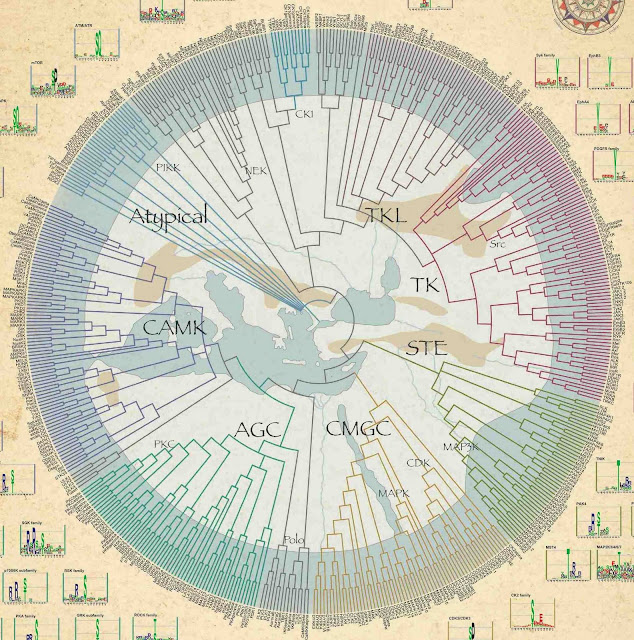Steps Toward the Mastery of DNA Based Life
Synthetic biologists are hard at work designing ways for microbes to produce new drugs, fuels, high value chemicals, and other important products to facilitate an abundant human future. Much of this work is being held back by the difficulty of moving beyond the primitive prokaryote bottleneck of bacterial cell signaling and transcription factors -- toward the mastery of more complex eukaryotic cells and gene expression found in yeast and higher organisms.
MIT's Timothy Lu and his collaborators at Boston University, have created 19 new transcription factor which work in (eukaryotic) yeast. They are hoping that some of them will also work in algae and other higher eukaryotic organisms.
Cell article abstract
MIT's Timothy Lu and his collaborators at Boston University, have created 19 new transcription factor which work in (eukaryotic) yeast. They are hoping that some of them will also work in algae and other higher eukaryotic organisms.
So far, most researchers have designed their synthetic circuits using transcription factors found in bacteria. However, these don’t always translate well to nonbacterial cells and can be a challenge to scale, making it harder to create complex circuits, says Timothy Lu, assistant professor of electrical engineering and computer science and a member of MIT’s Research Laboratory of Electronics.
...“If you look at a parts registry, a lot of these parts come from a hodgepodge of different organisms. You put them together into your organism of choice and hope that it works,” says Lu, corresponding author of a paper describing the new transcription factor design technique in the Aug. 3 issue of the journal Cell. _MITNews_via_NBF
The project is part of a larger, ongoing effort to develop genetic “parts” that can be assembled into circuits to achieve specific functions. Through this endeavor, Dr. Lu and his colleagues hope to make it easier to develop circuits that do exactly what a researcher wants.
...Recent advances in designing proteins that bind to DNA gave the researchers the boost they needed to start building a new library of transcription factors. In many transcription factors, the DNA-binding section consists of zinc finger proteins, which target different DNA sequences depending on their structure. The researchers based their new zinc finger designs on the structure of a naturally occurring zinc finger protein. “By modifying specific amino acids within that zinc finger, you can get them to bind with new target sequences,” Dr. Lu says.
The researchers attached the new zinc fingers to existing activator segments, allowing them to create many combinations of varying strength and specificity. They also designed transcription factors that work together, so that a gene can only be turned on if the factors bind each other.
Such transcription factors should make it easier for synthetic biologists to design circuits to perform tasks such as sensing a cell’s environmental conditions. The researchers built some simple circuits in yeast, but they plan to develop more complex circuits in future studies. “We didn’t build a massive 10- or 15-transcription factor circuit, but that’s something that we’re definitely planning to do down the road,” Dr. Lu says. “We want to see how far we can scale the type of circuits we can build out of this framework.”
The researchers are also planning to try their new transcription factors in other species of yeast, and eventually in mammalian cells including human cells. “What we’re really hoping at the end of the day is that yeast are a good launching pad for designing those circuits,” Dr. Lu says. “Working on mammalian cells is slower and more tedious, so if we can build verified circuits and parts in yeast and then import them over, that would be the ideal situation. But we haven’t proven that we can do that yet.” _Genetic Engineering News
Cell article abstract
Labels: epigenetics, genetics

